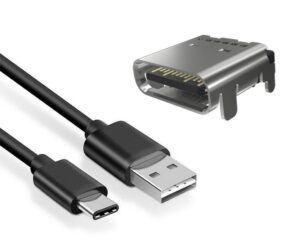Right to Repair Electronics Legislation Update
You own it. Can you fix it? Not yet. But depending on where you live, electronics repair businesses and hobbyists stand to gain new rights.

In many parts of the world, it’s illegal or intentionally difficult to fix your own electronics. That is about to change in some key markets, where independent repair businesses and DIY-minded consumers — and the components distributors that support them — will soon be able to make repairs and modifications to equipment. Years of effort by agriculture interests and consumer organizations have led to legislative progress for the Right to Repair movement, which aims to empower equipment buyers, create new repair business opportunities, increase the quality of electronic equipment, grow the volume of electronics knowledge, and disrupt the disposability mindset that has introduced enormous volumes of toxic e-waste into the environment.
Consumers have long despaired over planned obsolescence — a scheme in which equipment is so poorly made or designed that it barely outlasts a limited warranty period. This has led to more than 50 million tons of electronic waste entering our landfills and incinerators every year, leading to air and water contamination and wasted rare earth materials. In the past, a culture of independent repair businesses existed where a TV or computer could be repaired, thus extending the product lifetime. Today, many manufacturers fill devices with glue, design them to break upon opening, or hide vital repair information, giving consumers no choice but to toss the device and buy a new one.
Industries such as agriculture, where equipment failures cause devastating downtime losses, are fighting back by rejecting new technology in favor of repairability. Some farmers are returning to mechanical solutions after being unable to repair equipment needed for time-sensitive growing operations. In a study of U.S. farmers, 77% reported buying older equipment that they can fix themselves instead of new technologies that require costly and slow dealer intervention.
In the U.S., the Right to Repair movement is gaining ground on a state-by-state basis, with legislation introduced in at least 32 states. In June 2022, New York passed the Fair Repair Act, the first U.S. legislation that requires all manufacturers who sell “digital electronic products” to make tools, parts, and instructions for repair available. Notable exceptions include motor vehicles, home appliances, medical devices, public safety communications equipment (such as police radios), agriculture equipment, and off-road equipment. In Montana, led by farming interests, Sen. Jon Tester introduced the Agriculture Right to Repair Act to give farmers and independent repair shops the ability to diagnose and repair equipment. In Arkansas and California, led by concerns during the pandemic about hospitals’ ability to maintain lifesaving equipment, legislation that specifically addresses medical equipment repairability has been introduced (it passed in Arkansas senate but was defeated in California).

The USB Type-C connector will become the common charging port for devices in the European Union. (Shown: Amphenol Communication Solutions’ USB Type-C connector.)
In July 2022, the European Parliament adopted guidelines for a European Commission on the Right to Repair planned for later in 2022. New guidelines address product lifecycles, product design, ethical production, standardization, and consumer access to information on repairability.
An additional legislative move that will help reduce e-waste is the adoption of a common fast-charging connector, the USB Type-C, for small and medium chargeable devices. The EU, Parliament, and Council negotiators met to set a provisional agreement mandating that by autumn 2024, USB Type-C will become the common charging port for all mobile phones, tablets, and cameras sold in Europe. This will simplify compatibility issues for consumers and reduce the number of chargers and cables required to power all the devices we use today. The legislation harmonizes a charging speed across manufacturers and gives consumers the option of purchasing a new device with or without new charging equipment. Mobile phones, tablets, e-readers, earbuds, digital cameras, headphones and headsets, handheld videogame consoles and portable speakers that are rechargeable via a wired cable will have to be equipped with a USB Type-C port, regardless of their manufacturer. Laptops will also have to meet the requirements by 40 months after the entry into force.

iFixit repair kits, available from Digi-Key Electronics, help small repair businesses and individuals make electronics repairs.
The connector industry has supported hobbyists, makers, students, and innovators by making professional quality components easily available through distributors, many of which also provide support in the form of community knowledge. Digi-Key Electronics hosts iFixit’s famous teardown and repair videos, and is a distributor for iFixit tools and repair kits. RS Components’ DesignSpark community offers advice forums, CAD libraries, and software used in repairs — all in service of furthering the many facets of electronics know-how and innovation. (RS Components is part of Allied Group.) Avnet’s Hackster.io community provides crowdsourced advice and information on repair strategies.
To learn more about the companies mentioned in this article, visit the Preferred Supplier pages for Allied Components & Automation, Amphenol Communications Solutions, Avnet, and Digi-Key Electronics.
- Where in the World is Amphenol LTW’s Luc Kan? - April 23, 2024
- TE Connectivity’s Sustainability Efforts Pay Off - April 23, 2024
- What is a VGA Connector? - April 23, 2024

